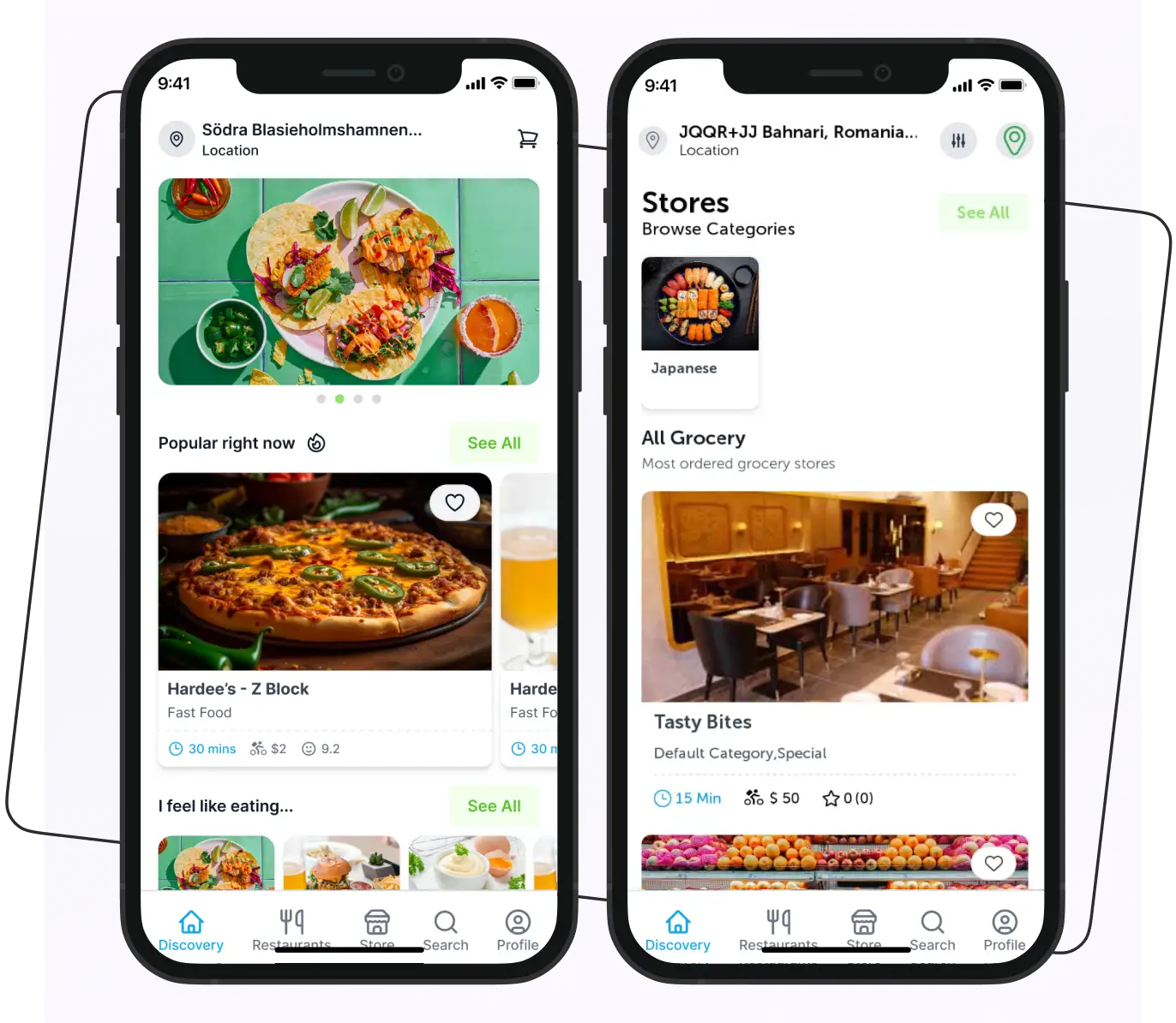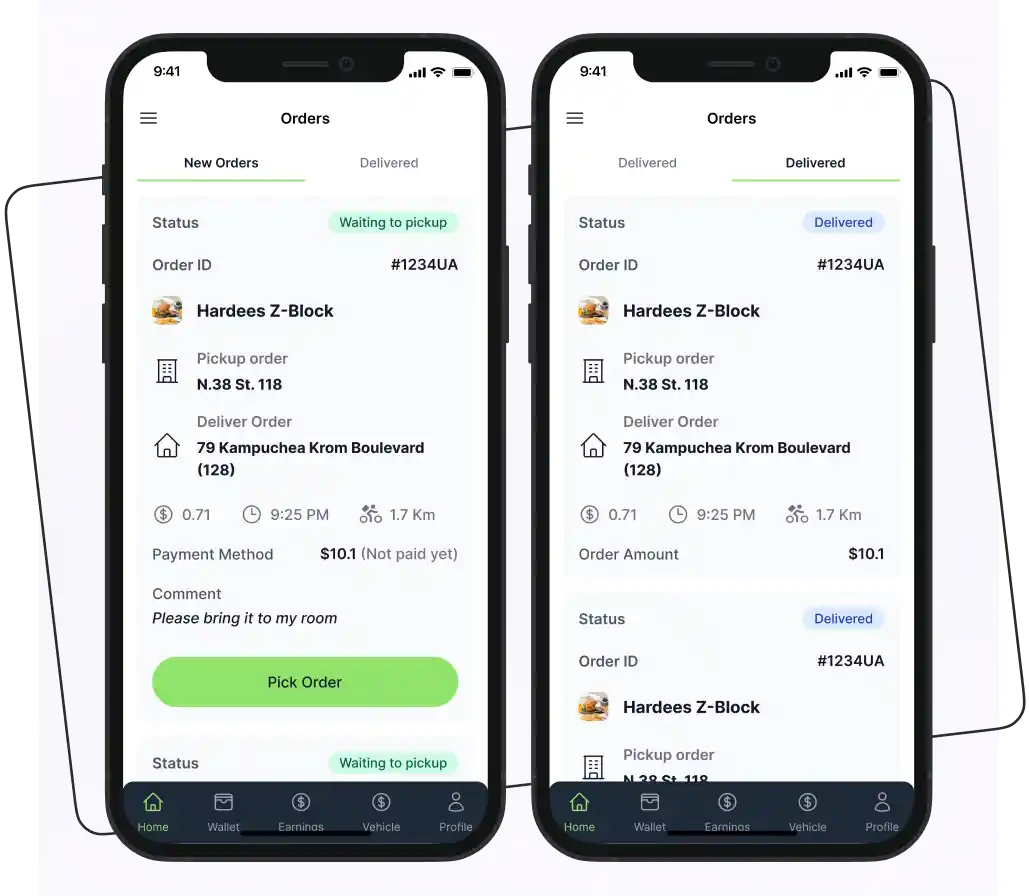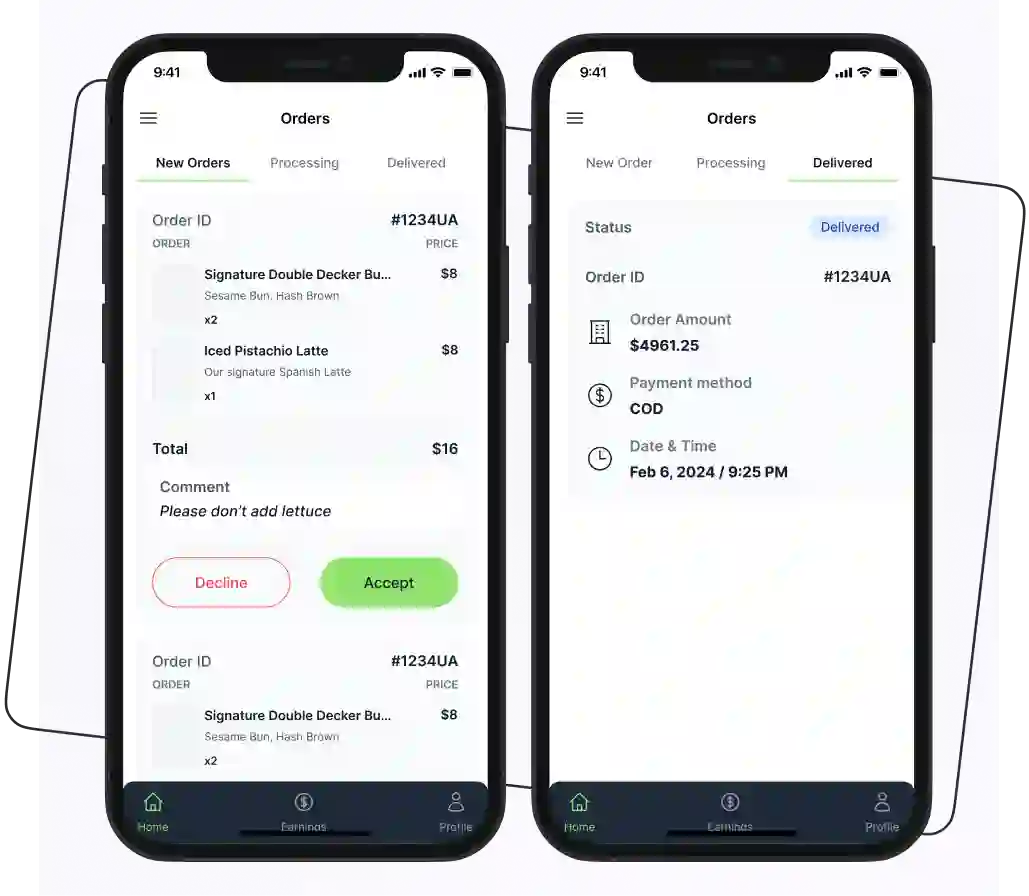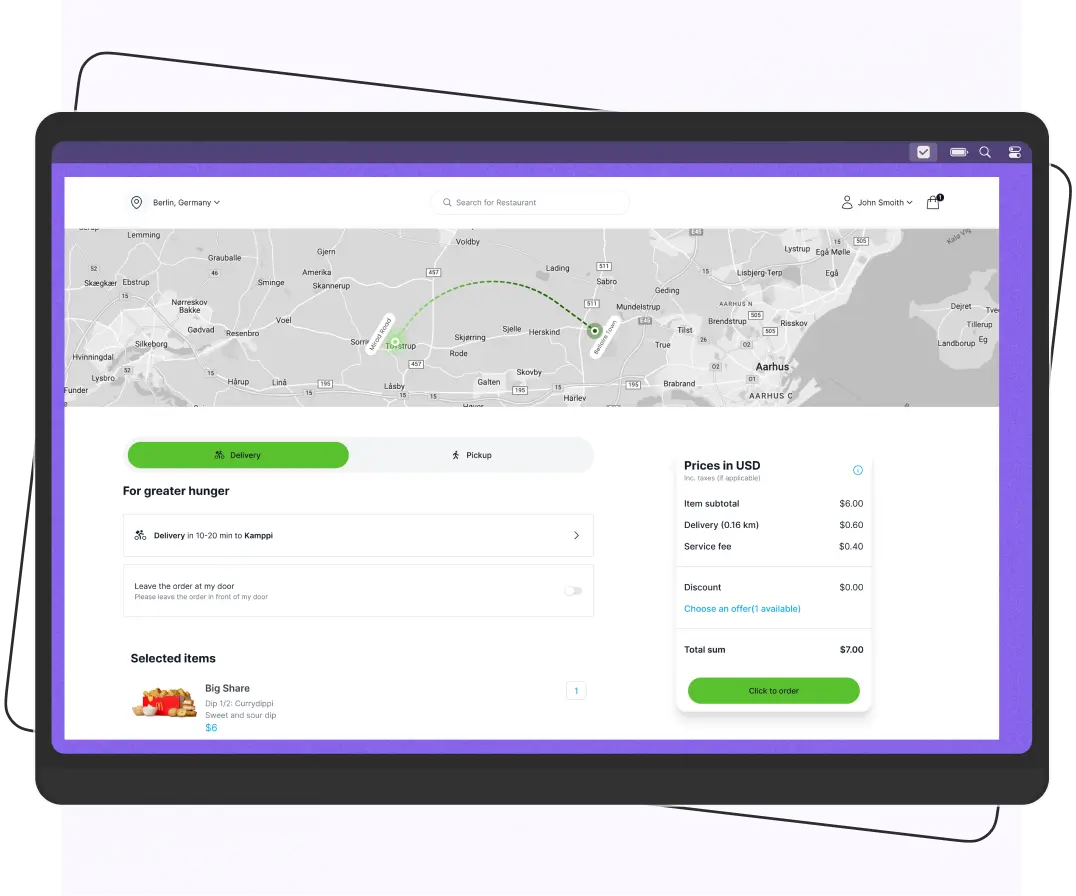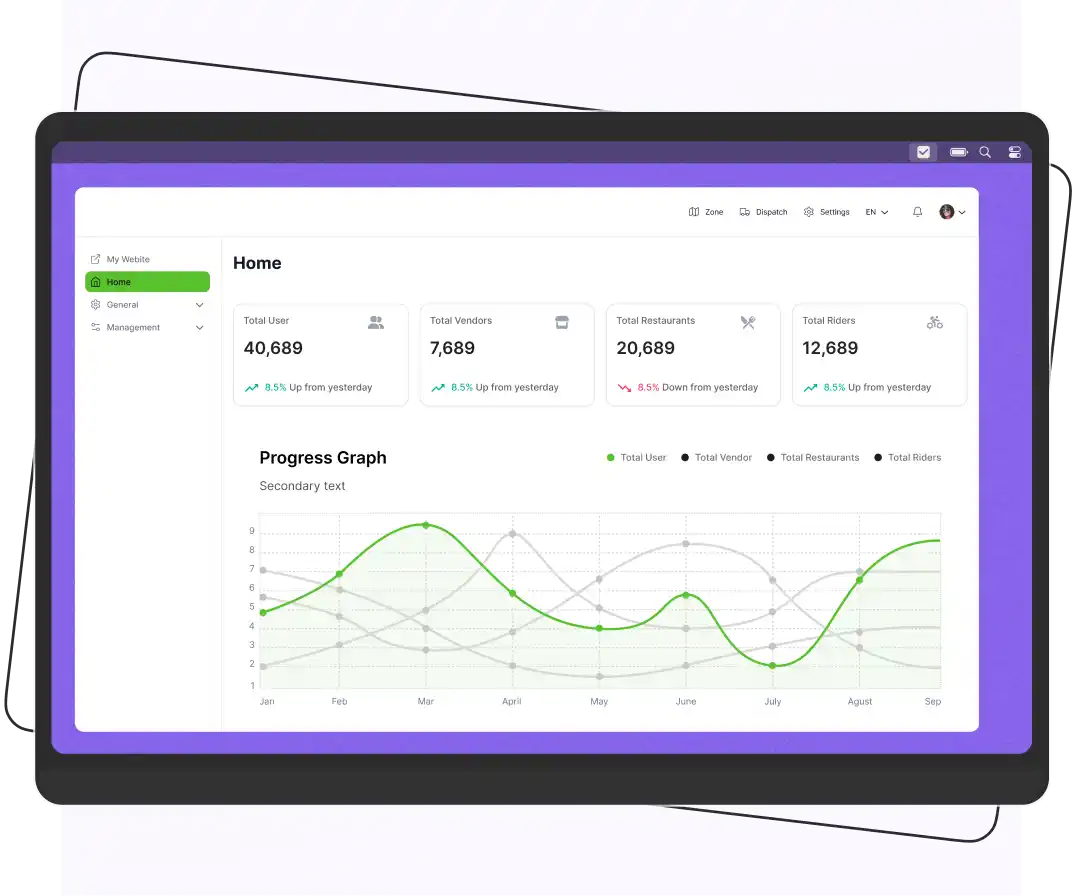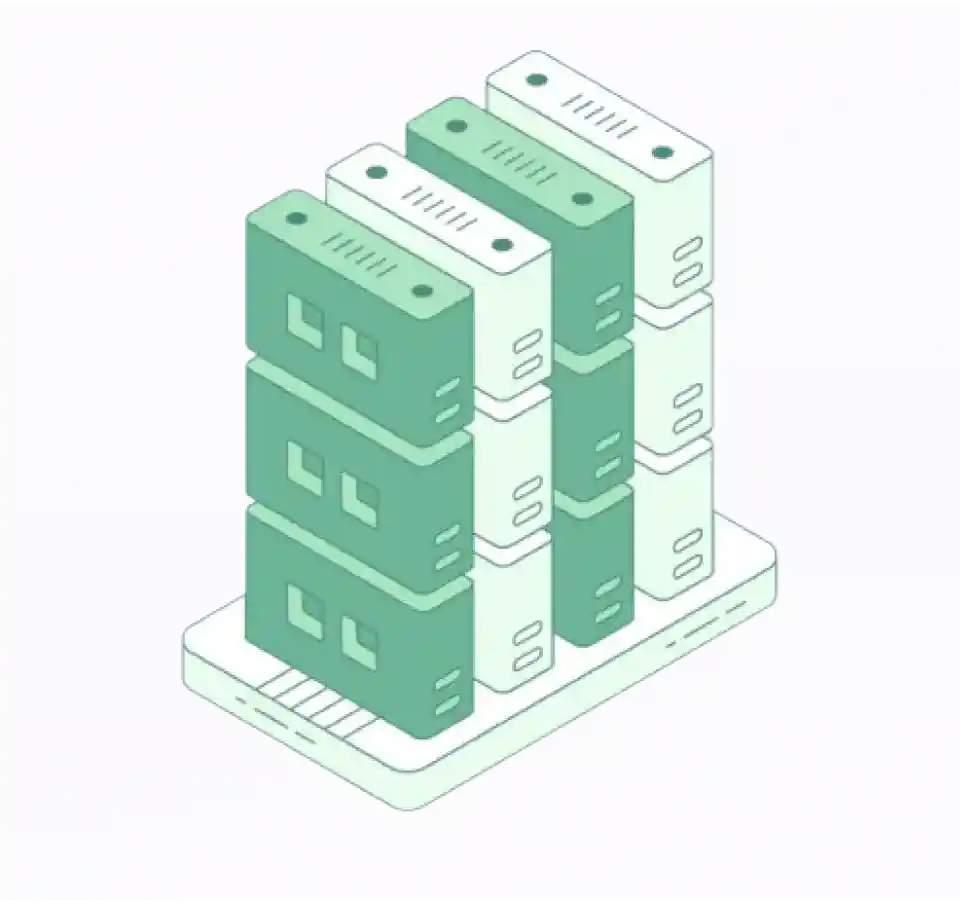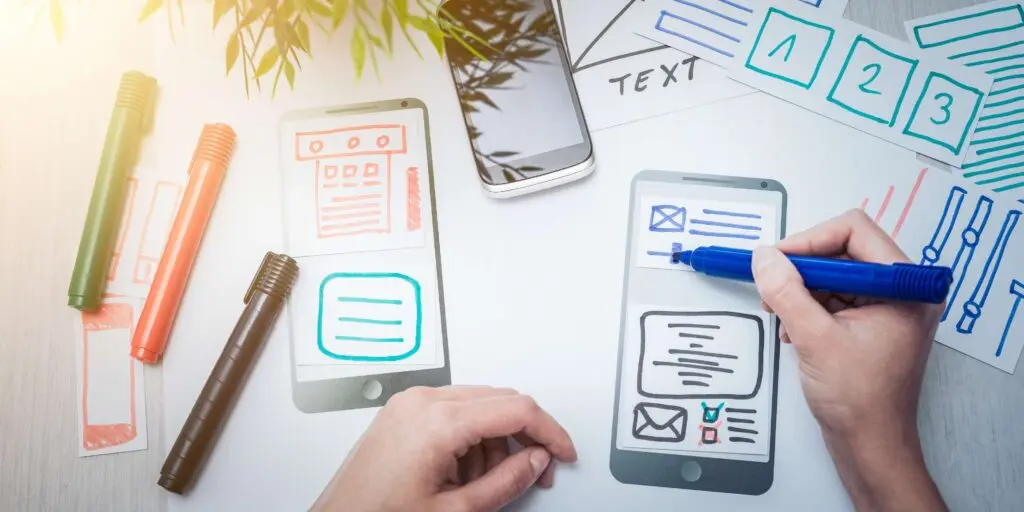
Key Takeaways
- Growing Demand: On-demand food delivery apps are projected to have 185 million users by 2025, highlighting their immense growth potential.
- Importance of Architecture: A well-structured app architecture ensures smooth performance, scalability, and user satisfaction.
- Core Components: The architecture involves a user interface, backend services, database, APIs, and third-party integrations to streamline operations and enhance user experience.
- Design Principles: Performance, scalability, security, reliability, and user-friendliness are critical for building an effective app.
- Steps to Build: The process includes market research, feature selection, UI/UX design, development, testing, and deployment.
- Cost Estimate: Developing a food delivery app can range from $5,000 for basic features to $100,000 or more for advanced functionalities.
In the world of technology, on-demand food delivery apps are on the rise. Every year, food-ordering apps see a massive increase in users. According to the research, in 2025, the number of customers of on-demand food delivery apps is expected to grow to 185 million.
However, several food delivery apps are available, so it’s quite challenging to attract customers. Therefore, building a scalable food delivery app architecture for your app is necessary. The better your app architecture is, the better your app performs, and you can achieve your goal.
Good architecture helps the app perform smoothly and facilitates seamless communication between users and restaurants. The architecture of a food delivery service requires a careful understanding of the project’s infrastructure and the responsibilities of each component.
To learn more about the food delivery apps process and grow your business with the latest market trends, then you’re at the right place. This blog will explore the architecture, features, cost, and steps related to developing food delivery apps.
What is a Food Delivery App Architecture?
The food delivery app architecture involves various elements. Using the interface, customers can place orders and check the delivery progress. The main objective of the architecture is to provide a seamless experience to customers and restaurants.
The user interface connects with the backend server, which manages all processes, such as online orders, order fulfillment, payment processing, and more.
In addition, the server integrates with outside services, which include mapping and geolocation. All the customer and restaurant information is stored on the app database.
Let’s discuss these components in detail.

User Interface
The user interface is the foremost thing that users interact with. It includes various features, such as order tracking, browsing restaurants, placing orders, and making payments.
Also, UI includes:
Customer App: The app allows users to browse menus, place orders, and track deliveries.
Restaurant App: From the restaurant app, the restaurants manage orders, view orders, track deliveries, update their availability, and more.
Rider App: With a rider app, the riders can accept or reject orders, navigate routes, and update order status.
Backend Services
The backend services are responsible for managing various app operations. They handle the data and logic behind the app. The backend services include:
- Authorization
- Authentication
- Menu management
- Payment gateway
- Order management
- Notifications
- User profiles and more
Database
The database is an integral part of the food delivery app architecture. It helps store and manage customer, restaurant, and rider data. The database acts as a central hub.
For the customer app, the customer’s personal information, such as name, phone number, delivery address, and other information, is stored in the database.
The database for food delivery app stored the restaurant information, including location, operation hours, and menu items. In addition, the order-related data, which includes delivery instructions, payment status, timestamps, and order details, is also in the database.
All this information makes it possible to handle orders quickly and correctly, and helps us keep track of their progress as they are delivered.
Application Programming Interfaces (APIs)
The food delivery app can communicate with other services and systems through APIs. They make it easy for the app to connect to many third-party systems and services, increasing its usefulness and giving users a better experience.
The APIs are used to connect geolocation and mapping services. With this, the app can collect positive information and provide real-time tracking of goods.
Third-Party Integrations
The third-party integrations are associated with adding external services to improve the app functionality. These integrations improve user experience and streamline operations for restaurants and riders.
With mapping and geolocation integration, the riders can reach their destination on time by providing optimized routes. Also, the app can track orders in real-time and enhance user experience with live tracking.
Restaurants can partner with renowned payment gateways like Stripe, PayPal, or more. It helps them facilitate secure and smooth online transactions.
Analytics and Reporting
The reporting and analytics provide information about order trends, user activity, and app performance. With this data, the restaurants can make informed decisions for their business. Additionally, it increases operational efficiency and streamlines all operations.
Admin Panel
The admin panel helps administrators manage orders, restaurants, riders, and user support effectively. The administrators can make data-driven decisions from the admin panel to improve the user experience.
Food Delivery App Architecture vs. Grocery Delivery App Architecture
| Aspect | Food Delivery App | Grocery Delivery App |
| Order Frequency | High (daily or weekly meals) | Medium (weekly or bi-weekly shopping) |
| Logistics | Often time-sensitive (hot food) | Focused on inventory and batch delivery |
| Architecture Focus | Real-time routing, restaurant menus, and delivery time windows | Warehouse inventory, product availability, and delivery slots |
| User Features | Menu customization, real-time ETA, reviews | Cart saving, bulk orders, substitutions |
Design Principles of an Online Food Delivery App
Below is a list of the food delivery system design principles that should be considered while architecting any system.
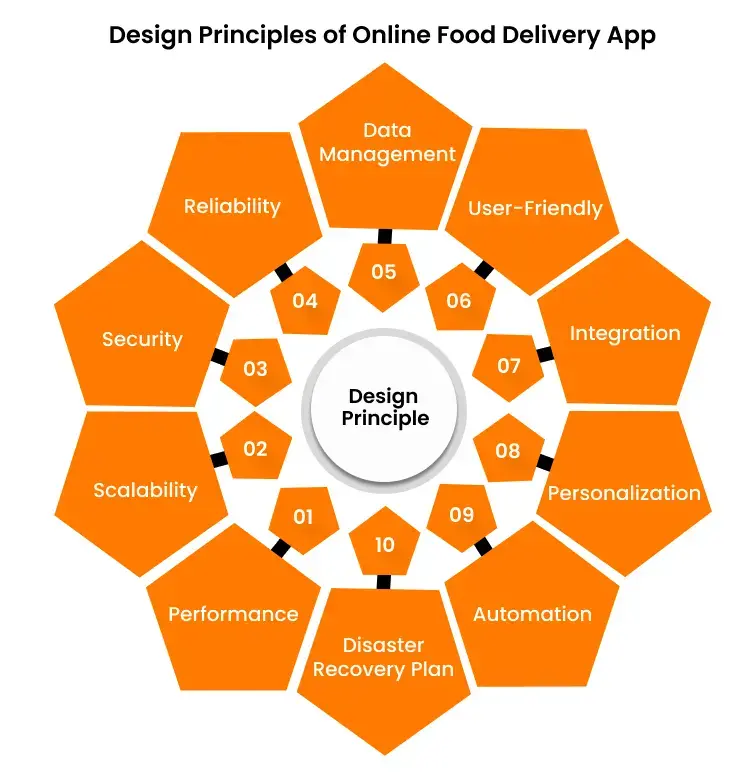
Performance: The system should be designed to provide a fast response time for handling high throughput and low latency.
Scalability: The large number of users and orders should be easily handled.
Security: All sensitive information should be protected.
Reliability: The system should be able to handle failures without disrupting the service.
Data Management: The system should handle large amounts of data.
User-Friendly: The user interface should be easy to navigate, and all customers of all ages can use it easily.
Integration: The system should easily integrate location tracking, payment gateways, and map services.
Personalization: The system should be personalized by offering customized offers and recommendations.
Automation: To minimize manual intervention, design food delivery system with automation and improve efficiency.
Disaster Recovery Plan: A disaster recovery plan should be included in the system so businesses can keep running even if something goes wrong.
How Does The Food Delivery App Work?
The online food delivery process includes four apps: customer, restaurant, rider, and admin. Each app contains features for smooth functioning.
Take a look below and learn what the food delivery app provides.
Customer App
The customer app connects users with their favorite restaurants so they can easily place an order through the app. Its main features are:
- Menu viewing
- Restaurant browsing
- Customization of the menu
- Secure payments
- Order tracking
- Reviews and ratings
- Promo codes and discounts
- View order history
- Notifications
- Search functionality
- User profile
Restaurant App
The restaurant app helps them to manage their food delivery operations through a single platform. It allows them to promote their services and stand out from the crowd. Its features include:
- Order management
- Menu update
- Order acceptance/rejection
- Order tracking
- Profile management
- Customer feedback
- Customer support
Rider App
With the rider delivery app, the restaurants ensure that orders are delivered on time. Using the food delivery rider app ensures the order is given to the right person. The main highlights of the rider app are:
- Order acceptance/rejection
- Order details
- Navigation assistance
- Notifications
- Customer feedback
- Order history
Admin Dashboard
The admin dashboard is the place where all the operations are managed. The admin has complete control from restaurant management to rider management. The main features of the admin dashboard are:
- User management
- Restaurant management
- Riders management
- Content management
- Analytics and reporting
How to Create a Food Delivery App?
You must follow the process that helps you with food delivery app development. Before solid planning, you cannot create a great food delivery app.
Below are some steps to help you in your food delivery app process.
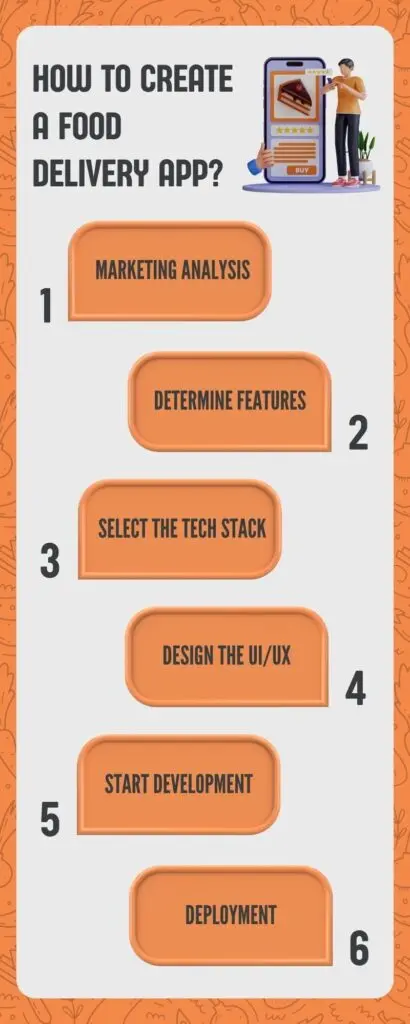
1. Marketing Analysis
Do research and know the latest market trends and competitors. Determine the app requirements, features, ordering technology, target audience, and business model to help in designing a food delivery system.
2. Determine Features
Identify the app features that make your app engaging for the users. Ensure the features you add can be implemented easily and take little time. In the food delivery app, you should include these features:
- Order tracking
- Payment integration
- Menu management
- Rider management
- Reviews and ratings
3. Select the Tech Stack
Select the technology stack according to the functionality of the app. Make sure you select it before working on it; otherwise, it will become a huge problem.
4. Design the UI/UX
Create a UI/UX design that is visually appealing and attracts users. Make the system design for food delivery app simple and easy for the users so that they can use it without hassle.
5. Start Development
After designing the food delivery app system design, start working on its development and implement each feature. When the development phase is complete, start testing and make the app error-free.
6. Deployment
Now, it’s time to deploy the app on the App Store and Google Play Store. Follow all their guidelines and deploy them successfully. After deployment, promote your app on social media platforms so people know about your food app.
Supercharge your deliveries with Enatega.
Launch NowCost of Building a Food Delivery App
How much would it cost to build a food delivery app?
The cost of building the food delivery app depends on the app’s features, app type, platforms, complexity, development process, tech stack, and scope.
However, with limited features, it costs between $5,000 – $10,000. The app costs between $50,000 – $100,000 or even more for multiple and advanced features.
Build Your Food Delivery App with Enatega
It would be best if you had a robust app architecture to build a top-notch food delivery app that benefits you. With the help of the Enatega team’s years of experience and knowledge, you will get the app that best meets your business needs.
Get the best solution for your brand from us that meets all customers’ demands. Contact us now, and let’s get started.
FAQs
1. How long does it take to develop a food delivery app?
Developing a food delivery app typically takes 3 to 6 months, depending on features, complexity, and the development team’s expertise.
2. What are the stages of an online order?
The stages of an online order include:
Order Placement: The customer selects items and completes the checkout process.
Order Confirmation: The system confirms the order and provides a summary to the customer.
Payment Processing: Payment is processed and verified.
Order Preparation: The restaurant or vendor prepares the order.
Order Dispatch: The order is handed over to a delivery service or rider.
Delivery: The order is delivered to the customer.
Order Completion: The customer receives the order and may provide feedback or review.
3. What is the most successful food delivery app?
The most successful food delivery app varies by region, but globally, Uber Eats and DoorDash are among the leaders in market share and user popularity. Other notable apps include Grubhub, Deliveroo, and Just Eat.
4. How does the food delivery app’s algorithm work?
The food delivery app’s algorithm matches users with nearby restaurants based on preferences, order history, and real-time availability, while optimizing delivery routes and times for efficiency. It often incorporates machine learning for personalized recommendations.
5. What is the AI-based food delivery app?
An AI-based food delivery app uses smart technology to recommend meals, optimize delivery routes, and improve order accuracy. It is making the whole process faster and more personalized for users.
6. What is the most important factor when choosing a food delivery app?
The most important factor is reliability, making sure the app delivers your food on time and gets your order right. Other things to consider are ease of use, restaurant choices, and good customer support.
7. What is the busiest food delivery app?
The busiest food delivery app often varies by location, but globally, apps like Uber Eats, DoorDash, and Grubhub tend to lead in popularity and order volume. In some regions, local apps may also be the busiest.
Supercharge your deliveries with Enatega.
Launch NowConclusion
The robust online food ordering system architecture is necessary to build a great app that delivers results. All the success of the app depends on the app architecture.
With the help of Enatega, you can easily build scalable apps that meet your needs and help you stay in the competitive market.













 IOS
IOS Android
Android Web
Web